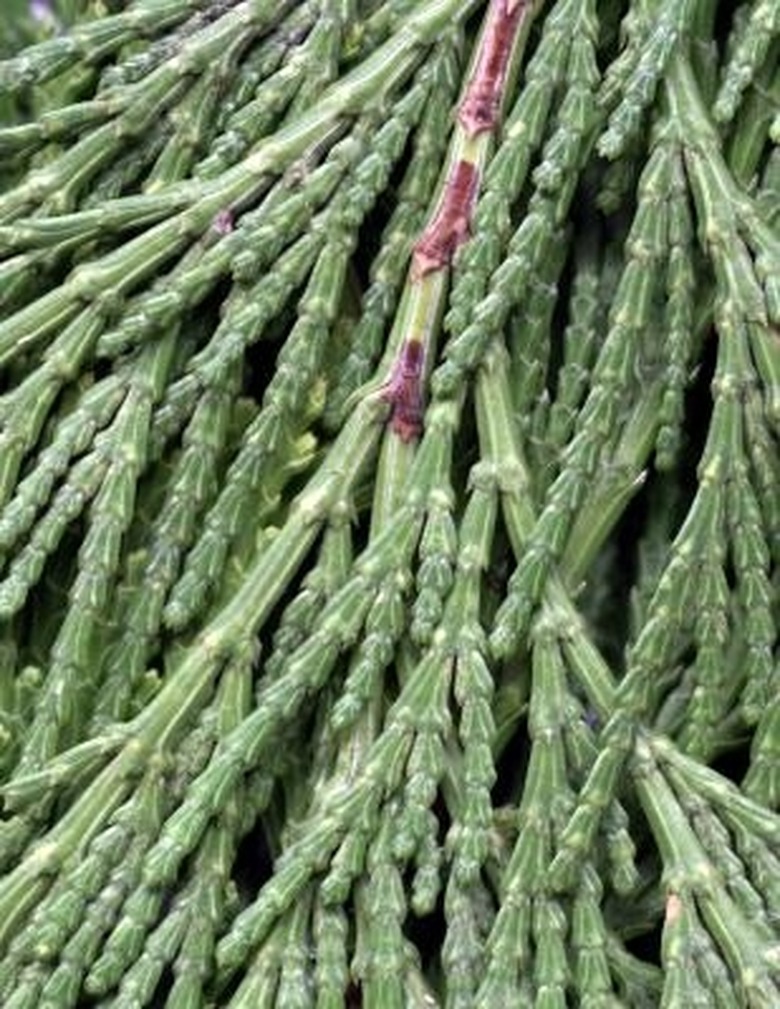Life Cycle Of A Cedar Tree
Cedar trees are members of the genus Cedrus, which is part of the Pinaceae or pine family. There are four cedar species. The trees are dioecious, meaning that male and female flowers, which are actually cone-like structures, occur on the same tree. The lifecycle starts with these cones.
Pollination
Pollination
The lifecycle begins in the when male catkin, or cone-like flowers, shed quantities of pollen. Air currents carry the pollen to female cones, where fertilization takes place. The seeds within the cones mature in 17 or 18 months, at which time the seeds are dispersed.
Growth
Growth
Seedlings quickly germinate. The growth rate depends on the species, location and climate, but at least one species, Cedrus deodora or Himalayan cedar, grows about 3 feet per year when young.
Maturity
Maturity
Plants are mature when they begin bearing male and female cones, which can take 5 years or more. The growth rate slows as the trees age, but cedars can grow 40 to 70 feet tall after 30 or 40 years and eventually reach more than 100 feet tall.
Lifespan
Lifespan
Lifespan in cedars depends on location, environmental stress and a host of other factors. In Lebanon, there are reportedly ancient specimens the cedar of Lebanon (Cedrus libani) estimated to be 2,000 years old.
References
- "Manual of Woody Landscape Plants"; Michael A. Dirr; 1997
- "The Botanical Garden, V 1"; Roger Phillips and Martyn Rix; 2002
- Harvard University: Arnoldia; Arnold Arboretum: The Quest for the Hardy Cedar-of-Lebanon
- Lebanon Tourism: The Cedars of Lebanon
